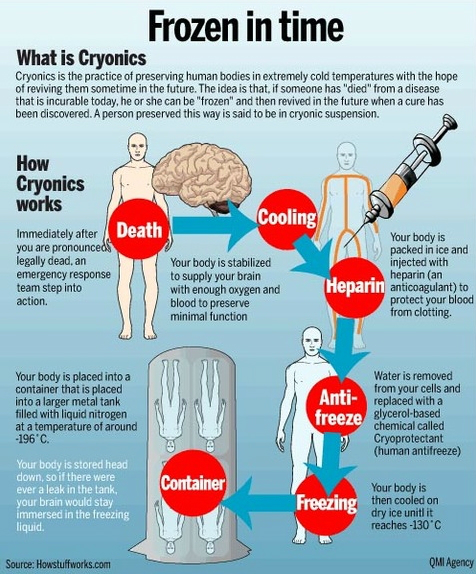What is Cryonics?

Cryonics is the preservation of the human body at cryogenic temperatures (−196°C) in the expectation that future medical technology may be able to repair the accumulated damage of aging and disease at the molecular level, and restore the patient to health.
Continuing progress in medical technology strongly suggests that treatments will be found for most currently fatal conditions and as a result our expected healthy, vigorous lifespans will get very much longer within the next few decades.
It is important to note that cryonic suspension is not a form of euthanasia. A cryonic preservation is the last resort of someone who wants to preserve their life, not end it. All Australian laws and regulations will be followed and respected. Preparation for preservation will only begin after death is pronounced in accordance with law.
Techniques that result in vitrification, as opposed to freezing, are now accepted practice for cryonic preservations. Cryoprotectants are used to prevent the formation of ice crystals at extremely low temperatures. Once the patient gets below a certain temperature, everything stops where it is and becomes a glass-like substance, rather than forming crystals.
Southern Cryonics role is primarily in the final stage of the process identified in the diagram above. i.e. the bringing of the patient to liquid nitrogen temperatures and the long term storage. The other stages are performed by organisations such as CryoPath.
The MIT Technology Review article The Science Surrounding Cryonics is a good summary.
